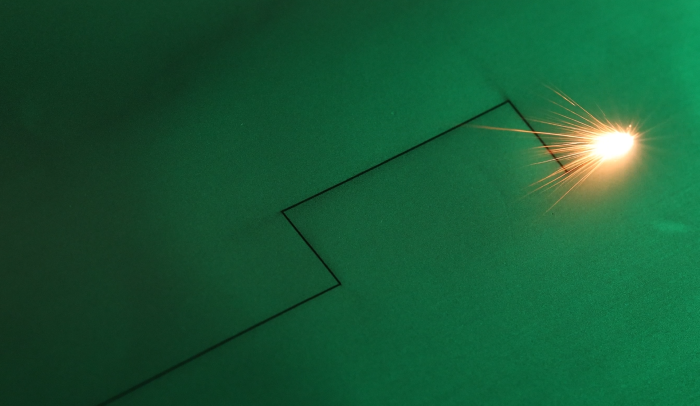Luxinar, a laser technology leader since 1998, is driving innovations for its laser sources at The Battery Show North America. The company is spotlighting its CO2 laser sources and femtosecond lasers at booth 5151 from 7 to 10 October in Detroit, USA.
 Notching battery electrodes with a femtosecond laser produces clean cuts with minimal HAZ. Image Credit: Luxinar
Notching battery electrodes with a femtosecond laser produces clean cuts with minimal HAZ. Image Credit: Luxinar
The non-contact high-speed laser process reduces dust, chemicals, and production delays caused by traditional tools, resulting in unmatched productivity. Here, we highlight one of the many applications where lasers can improve battery production.
Remote Cutting of Lithium-Ion Battery Electrodes with Femtosecond Lasers
Lithium-ion batteries are the cornerstone of modern electronics and electric vehicles. Their production necessitates the precise cutting of thin anode and cathode materials, but using traditional punching technology produces wear and tear over time.
Laser cutting (or notching and slitting) presents a promising alternative, with remote cutting by femtosecond lasers emerging as a leading solution. A critical challenge in laser cutting is maintaining a clean 'clearance width', which refers to the exposed middle layer after cutting through a multi-layered material. Conventional fibre lasers, characterised by longer pulse durations (250 nanoseconds), can create a large heat-affected zone (HAZ) around the cut, compromising the overall quality.
Femtosecond lasers, such as Luxinar’s LXR® series, with pulse durations shorter than one picosecond, offer significant advantages. Their short pulses minimise heat transfer, resulting in cleaner cuts with minimal HAZ, improved edge quality and potentially higher cutting speeds. To achieve a balance between speed and quality, a 'burst' of femtosecond pulses is crucial. This technique involves delivering rapid multiple pulses that optimise cutting speed without sacrificing quality compared to single-pulse processing. Using femtosecond lasers for remote cutting of lithium-ion battery electrodes represents a significant advancement in the field. With their ability to deliver clean, high-quality cuts at potentially faster speeds, femtosecond lasers contribute to improved battery production efficiency and performance. Further research on optimising burst-pulse methods and exploring different femtosecond laser parameters could unlock more potential in this critical area.
Other battery applications for Luxinar’s lasers include:
- Cutting separator foils: A dust and chemical-free non-contact process.
- Unwrapping battery cells: An automated process that does not overheat the cells.
- Surface texturing: High-speed hole drilling for increased productivity and higher charge/discharge currents.
- Ablating battery casings, busbar and hairpin coatings: A quick, clean process that minimises downtime.
Yannick Galais, Sales Director at Luxinar, stated: “In the complex processes underlying battery production, the laser emerges as an indispensable tool for numerous applications. Luxinar’s laser sources are crucial in slitting, notching, and surface functionalisation processes and can expand the boundaries of what is technically possible."